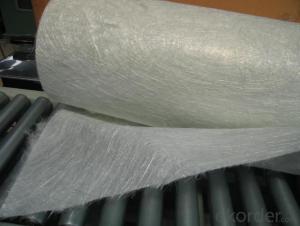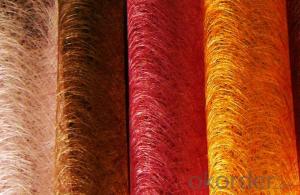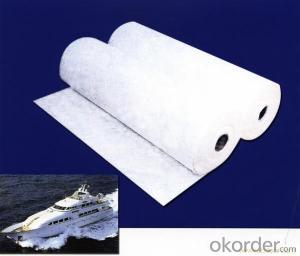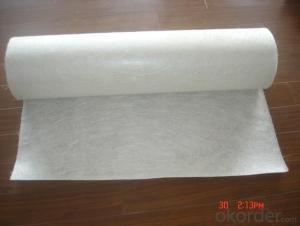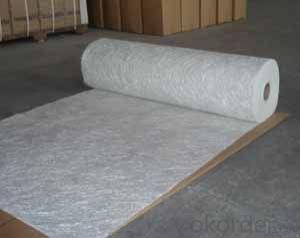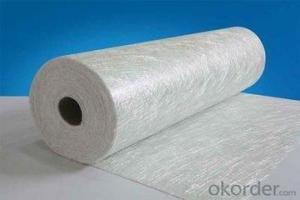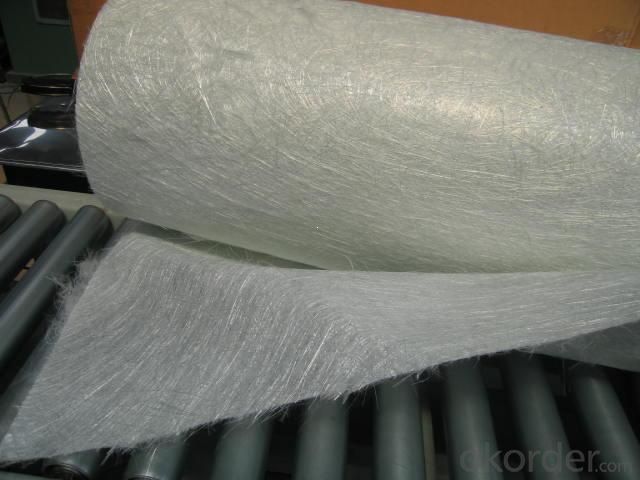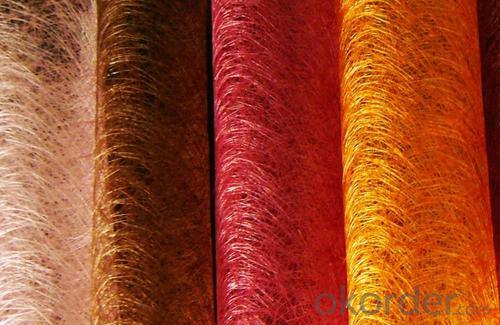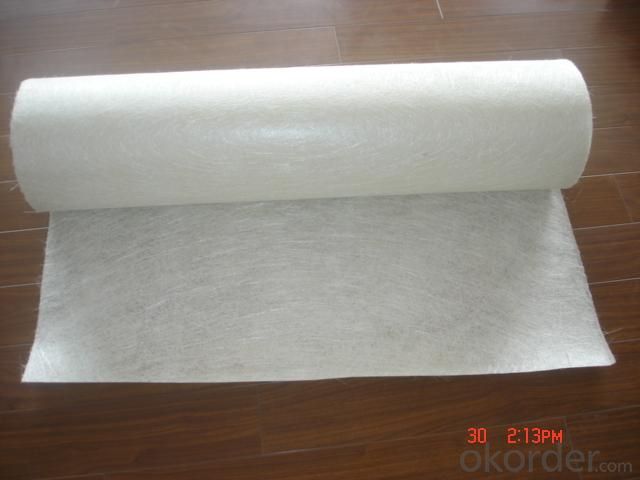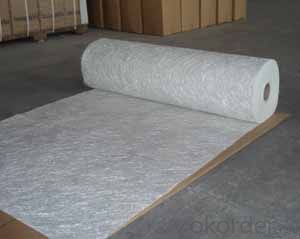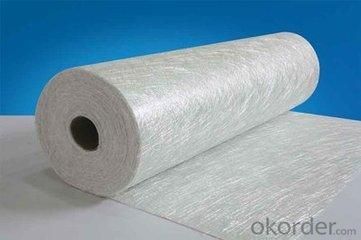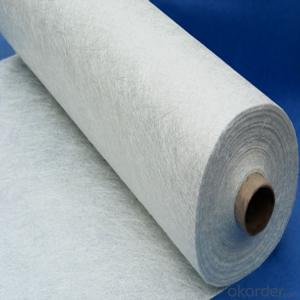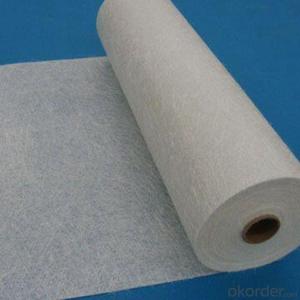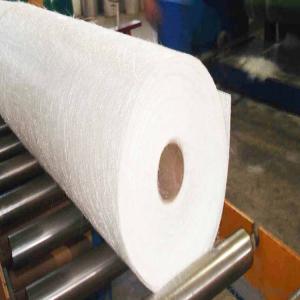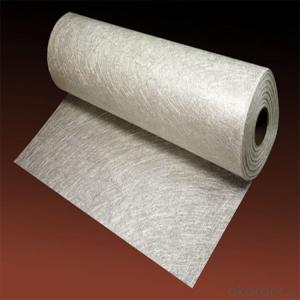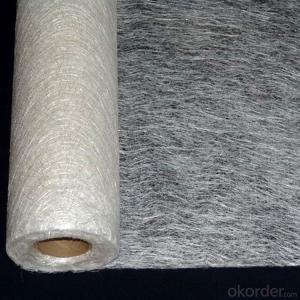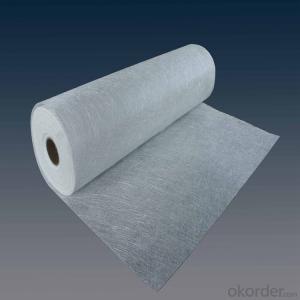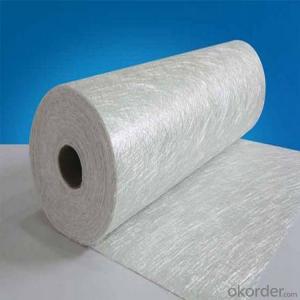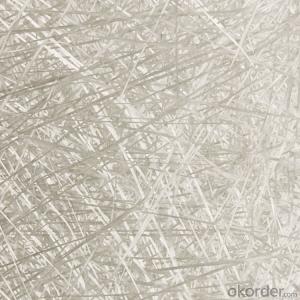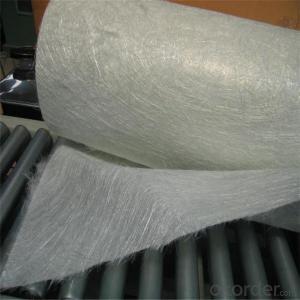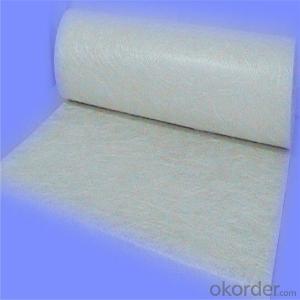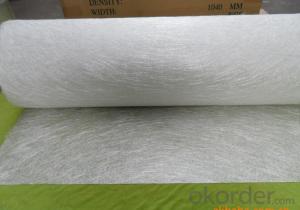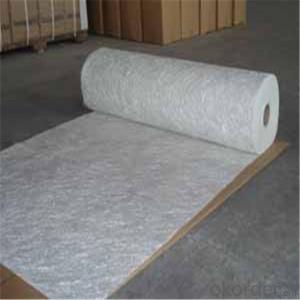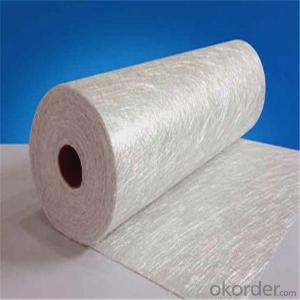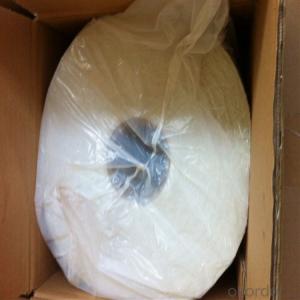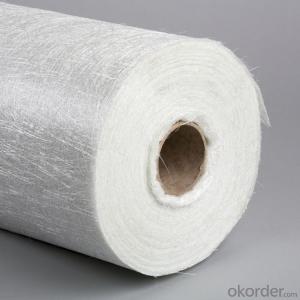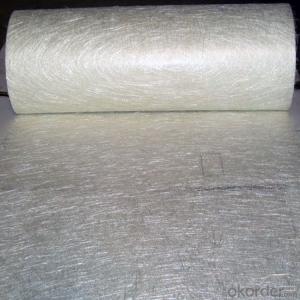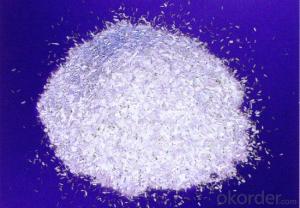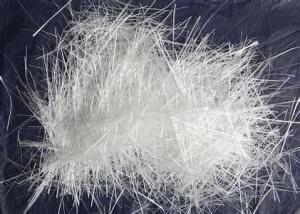Chopped Strand Fiberglass Mat (CSM) - 2024 Fiberglass Powder Chopped Stand Mats
- Loading Port:
- Tianjin
- Payment Terms:
- TT OR LC
- Min Order Qty:
- 100 m.t.
- Supply Capability:
- 20000 m.t./month
OKorder Service Pledge
Quality Product, Order Online Tracking, Timely Delivery
OKorder Financial Service
Credit Rating, Credit Services, Credit Purchasing
You Might Also Like
Quick Details
| Technique: | Chopped Strand Fiberglass Mat (CSM) | Dimensions: | 450gsm | Mat Type: | Continuous Filament Mat |
| Fiberglass Type: | E-Glass | Softness: | softness | Place of Origin: | Jiangxi, China (Mainland) |
| Brand Name: | cnbm | Model Number: | 450gsm | color: | white |
| fiberglass type: | E glass | product: | e-glass powder chopped stand mats | binder: | powder or emulsion |
| width: | 1040 or 1270mm, as your requirement | weight: | 30 or 45kg/roll | paper tube diameter: | 90mm |
| outer diameter of roll: | 256mm | packing: | plastic film+carton box + pallet |
Packaging & Delivery
| Packaging Details: | plastic film+carton box + pallet |
| Delivery Detail: | 15-20days |
Specifications
1.e-glass powder chopped stand mats
2.binder:power or emulsion
3.width:1040mm or 1270mm
4.weight:450gsm
Picture
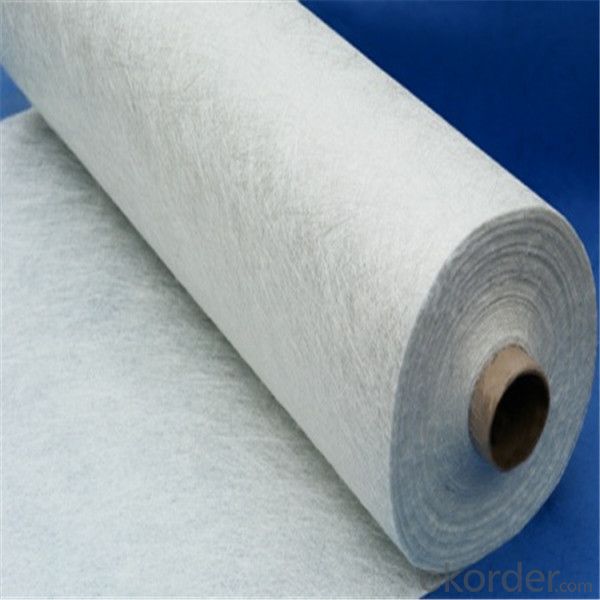
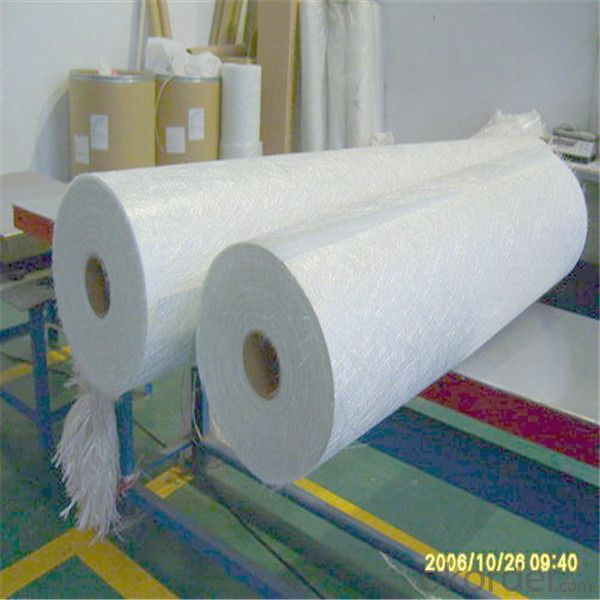
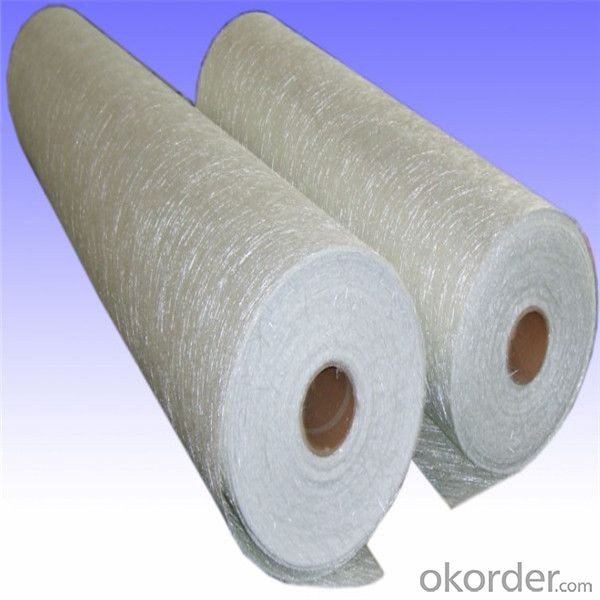
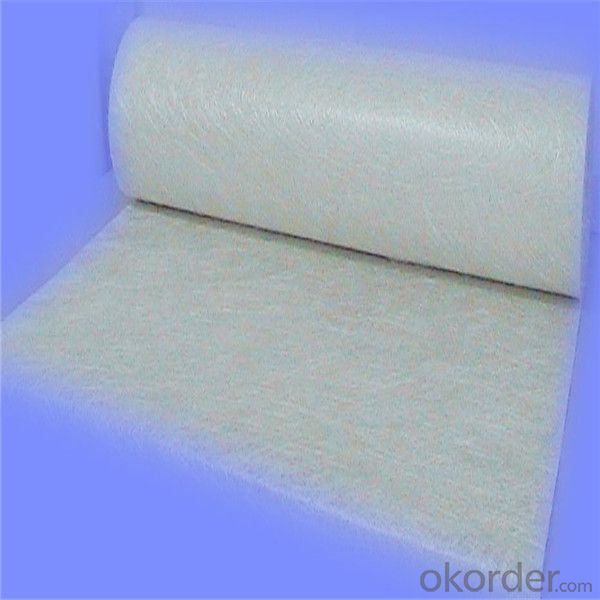
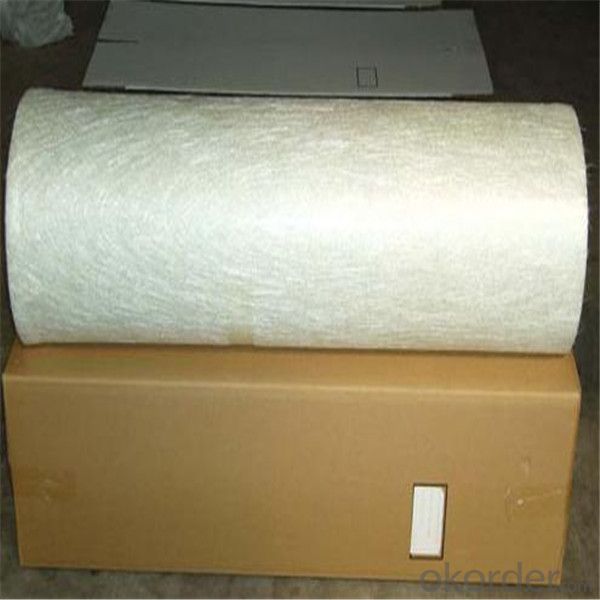
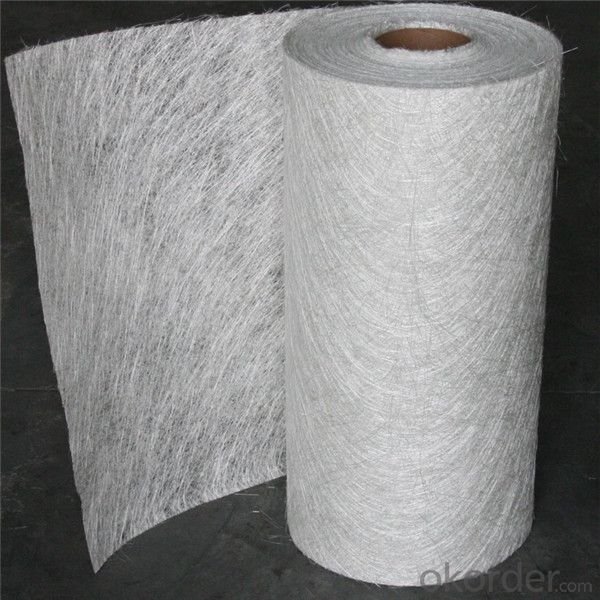
- Q: Can fiberglass chopped strand be used in the manufacturing of sports equipment?
- Yes, fiberglass chopped strand can be used in the manufacturing of sports equipment. Fiberglass chopped strand is a versatile material that offers several advantages for sports equipment manufacturing. Firstly, fiberglass chopped strand is lightweight, which is a desirable characteristic for sports equipment as it allows for ease of use and maneuverability. Whether it's for tennis rackets, golf clubs, or hockey sticks, the lightweight nature of fiberglass chopped strand ensures that the equipment is not cumbersome and helps optimize performance. Secondly, fiberglass chopped strand offers excellent strength and durability. Sports equipment is subjected to significant stress and impact during use, and fiberglass chopped strand provides the necessary strength to withstand these forces. This ensures that the equipment remains in good condition and can perform optimally for an extended period of time. Additionally, fiberglass chopped strand is corrosion-resistant, providing protection against moisture and other environmental factors. This is particularly beneficial for sports equipment that may be exposed to water or harsh weather conditions, such as surfboards or kayaks. Furthermore, fiberglass chopped strand can be easily molded into various shapes and sizes, allowing for the production of customized sports equipment. This flexibility in design is essential to meet the specific requirements of different sports and individual athletes. Overall, fiberglass chopped strand is a suitable material for the manufacturing of sports equipment due to its lightweight, strength, durability, corrosion-resistance, and flexibility. Its use can enhance the performance and longevity of sports equipment, making it a popular choice in the industry.
- Q: What are the storage requirements for fiberglass chopped strand?
- To maintain the quality and integrity of fiberglass chopped strand, the main focus lies in its storage requirements. It is crucial to keep it in a dry and well-ventilated space to avoid moisture absorption, as excessive moisture can cause the material to degrade and perform poorly. Moreover, the storage area must be shielded from direct sunlight and extreme temperature changes, as these factors can also have adverse effects on its properties. It is advisable to store the chopped strand in its original packaging or securely sealed containers to safeguard it from dust, dirt, and other pollutants. By adhering to these storage guidelines, the fiberglass chopped strand can be preserved in prime condition, ensuring its effectiveness and long-lasting performance in various applications.
- Q: How is the abrasion resistance of fiberglass chopped strand composites tested?
- The abrasion resistance of fiberglass chopped strand composites is typically tested using standardized methods such as ASTM D4060 or Taber Abrasion Test. These tests involve subjecting the composite material to abrasive wear by rubbing it against a specified abrasive material under controlled conditions. In the ASTM D4060 test, a rotating wheel with a specific abrasive material is pressed against the surface of the composite sample. The wheel applies a predetermined load and moves in a circular path, causing abrasion on the sample. The test is performed for a specified number of cycles or until a certain level of wear is achieved. The weight loss or change in appearance of the sample is then measured to determine its abrasion resistance. Similarly, the Taber Abrasion Test utilizes a specialized machine that applies a specific type and level of abrasion to the composite material. The sample is mounted on a rotating turntable, and abrasive wheels or disks are pressed against the sample surface while it rotates. The test is performed for a specified number of cycles, and the weight loss or change in appearance of the sample is measured to evaluate its abrasion resistance. Both methods provide quantitative data on the abrasion resistance of fiberglass chopped strand composites, allowing manufacturers and researchers to assess the material's durability and suitability for various applications. These tests help in designing and selecting materials that can withstand wear and provide long-lasting performance in environments where abrasion is a concern, such as automotive components, marine applications, or industrial equipment.
- Q: What is the interlaminar shear strength of fiberglass chopped strand?
- The interlaminar shear strength of fiberglass chopped strand refers to the ability of the individual strands of fiberglass to resist shearing forces between adjacent layers or laminates. It is a measure of the material's ability to maintain structural integrity under these forces. The interlaminar shear strength of fiberglass chopped strand can vary depending on various factors such as the length and diameter of the strands, the resin matrix used, and the manufacturing process. However, fiberglass is known for its high interlaminar shear strength, making it a popular choice for applications that require strong and durable composite materials.
- Q: How does the fiber content of fiberglass chopped strand-reinforced composites affect their properties?
- The fiber content of fiberglass chopped strand-reinforced composites has a significant impact on their properties. Firstly, the fiber content determines the overall strength and stiffness of the composite material. As the fiber content increases, the composites become stronger and stiffer, as the fibers provide reinforcement and resist deformation under load. This is particularly important for applications where high strength and rigidity are required, such as in construction, automotive, and aerospace industries. Secondly, the fiber content affects the composite's impact resistance and fatigue life. Higher fiber content enhances the material's ability to absorb and disperse energy during impact, reducing the risk of fractures or breakages. Additionally, a higher fiber content can improve the material's resistance to repetitive loading, extending its fatigue life and making it more durable over time. Furthermore, the fiber content influences the composite's thermal and electrical conductivity. Fiberglass composites with higher fiber content tend to have lower thermal and electrical conductivity, making them suitable for applications that require insulation or electrical resistance, like electrical enclosures or insulation panels. Lastly, the fiber content affects the composite's weight and cost. Higher fiber content generally leads to a denser material, which can increase the weight of the composite. However, this increased density also contributes to its strength and stiffness. Additionally, higher fiber content often translates to higher production costs, as more fibers are needed to manufacture the composite. In summary, the fiber content of fiberglass chopped strand-reinforced composites directly influences their strength, stiffness, impact resistance, fatigue life, thermal and electrical conductivity, weight, and cost. Therefore, careful consideration of the desired properties and intended application is crucial when determining the optimal fiber content for a specific composite material.
- Q: What are the typical reinforcements used in combination with fiberglass chopped strand?
- The typical reinforcements used in combination with fiberglass chopped strand include various types of resins, such as polyester, vinyl ester, and epoxy. These resins are commonly used to impregnate the fiberglass chopped strand and provide added strength and durability to the composite material. Additionally, other reinforcements such as carbon fiber, aramid fiber, or natural fibers like flax or hemp can also be used in combination with fiberglass chopped strand to enhance specific properties of the composite, such as increased stiffness, impact resistance, or weight reduction. Overall, the choice of reinforcements depends on the desired characteristics and performance requirements of the final product.
- Q: Take carbon fiber as an example to illustrate the manufacturing process of carbon fiber.
- It is mainly made by polyacrylonitrile and asphalt spinning, surface treatment and sizing process. The disparity in the domestic low-level product is small, carbonization (followed by graphite). The disparity between domestic and foreign is very large, and then by pre oxidation, but the high-end product(both high performance) can not do it, because it is too difficult.
- Q: What are the surface finish options for fiberglass chopped strand?
- The surface finish options for fiberglass chopped strand include smooth, textured, matte, and glossy finishes.
- Q: Use of glass fiber cloth
- Reinforced material
- Q: How does the fatigue resistance of the chopped strand affect its performance?
- The performance of a chopped strand is significantly affected by its fatigue resistance. Fatigue resistance refers to a material's ability to withstand repeated loading and unloading cycles without experiencing a significant decrease in its mechanical properties or structural integrity. When chopped strand is used as a reinforcement material in various composite applications, its fatigue resistance directly impacts the durability and reliability of the final product. In dynamic or high-stress environments, the chopped strand must be able to endure repetitive stress without excessive deformation, degradation, or failure. A chopped strand with high fatigue resistance will exhibit enhanced performance compared to a material with lower fatigue resistance. It will be able to withstand a greater number of loading cycles before showing signs of mechanical deterioration, such as cracking, delamination, or loss of stiffness. The fatigue resistance of chopped strand is influenced by various factors, including the fibers used, the manufacturing process, and the composite matrix material. Fibers with higher tensile strength, like carbon or aramid fibers, generally have better fatigue resistance compared to weaker fibers such as glass. The manufacturing process, including the alignment and distribution of chopped strands within the composite, can also affect fatigue resistance. Properly aligned and evenly distributed strands can distribute the applied load more evenly, reducing stress concentrations and improving fatigue resistance. The composite matrix material also plays a role in fatigue resistance. The matrix should have good adhesion and compatibility with the chopped strand to ensure efficient load transfer and minimize the development of micro-cracks or failures at the fiber/matrix interface during cyclic loading. In conclusion, the fatigue resistance of chopped strand is crucial for determining its performance. Higher fatigue resistance leads to improved durability, longer service life, and overall better performance in dynamic or high-stress applications. Therefore, it is essential to select chopped strand materials with suitable fatigue resistance properties for specific applications to ensure reliable and long-lasting composite products.
Send your message to us
Chopped Strand Fiberglass Mat (CSM) - 2024 Fiberglass Powder Chopped Stand Mats
- Loading Port:
- Tianjin
- Payment Terms:
- TT OR LC
- Min Order Qty:
- 100 m.t.
- Supply Capability:
- 20000 m.t./month
OKorder Service Pledge
Quality Product, Order Online Tracking, Timely Delivery
OKorder Financial Service
Credit Rating, Credit Services, Credit Purchasing
Similar products
Hot products
Hot Searches
Related keywords
